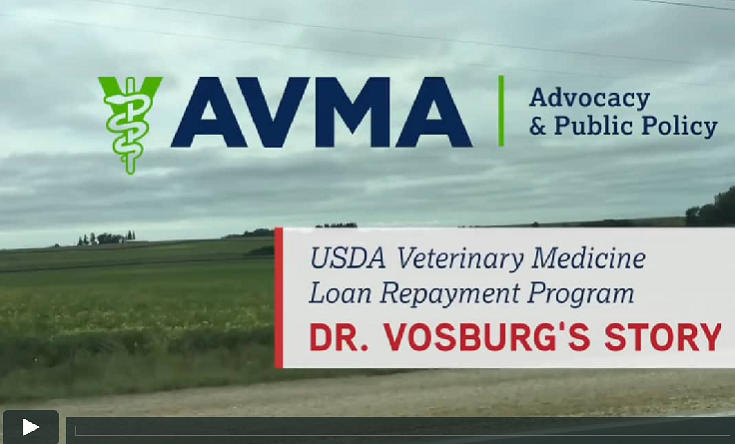Benefits of veterinary careers in rural areas
According to the American Veterinary Medical Association (AVMA), veterinary shortages are prominent and persistent in approximately 1,100 rural counties across the country. These are areas home to thousands of livestock, equine and small animals in need of care. Many veterinarians have to travel hundreds of miles to see large breed animals, and pet owners must also travel far to seek care for their smaller animals, which means often times both don’t get the kind of care they need, and if they do it can be expensive.
“If I wasn’t here, people would have had to travel even further to get their medicine and have their animals treated. I do believe that we provide a very important service in an area that is strongly needed,” said Dr. Zach Vosburg — a veterinarian in a rural town in Iowa — in the AVMA video below.
Rural veterinarians are necessary and in short supply. William Woods pre-vet students who agree to start their career in veterinarian shortage areas after their graduation from vet school may have access to specific student loan forgiveness programs.
Currently, the USDA’s Veterinary Medicine Loan Repayment Program (VMLRP) provides selected veterinarian students upwards of $75,000 in loan repayment for serving at least three years in a federally-designated shortage area.
“This repayment is key to incentivizing veterinarians to serve in shortage areas,” says the AVMA.
This is important when you consider that student loans averaged $143,758 for 2016 graduates of veterinary colleges, which can make practice in rural areas cost-prohibitive. The AVMA notes that “since the program’s inception, 388 awards have been made to veterinarians who have answered the call for public service across 45 states, Puerto Rico and on U.S. federal lands.”
Watch Dr. Vosburg’s story produced by the AVMA below. In the video, Dr. Vosburg says, “If [the VMLRP] can help those new young veterinarians do what they love like work in a mixed animal or rural practice and yet still be able to enjoy a decent quality of life, a decent living, and stay in the rural communities where you want them — that’s the whole goal of the program. Without it you’re fighting an uphill battle to keep rural veterinarians where they’re at.”
Learn more about the VMLRP and understand possible changes that may help pre-vet students even more at avma.org/helpruralamerica.


